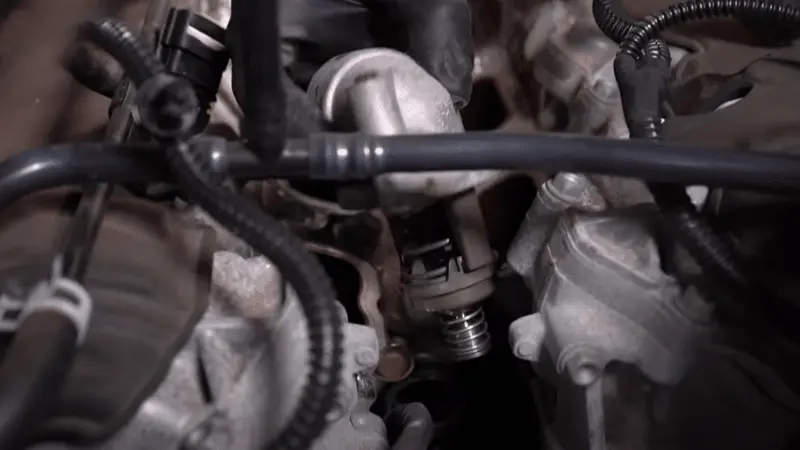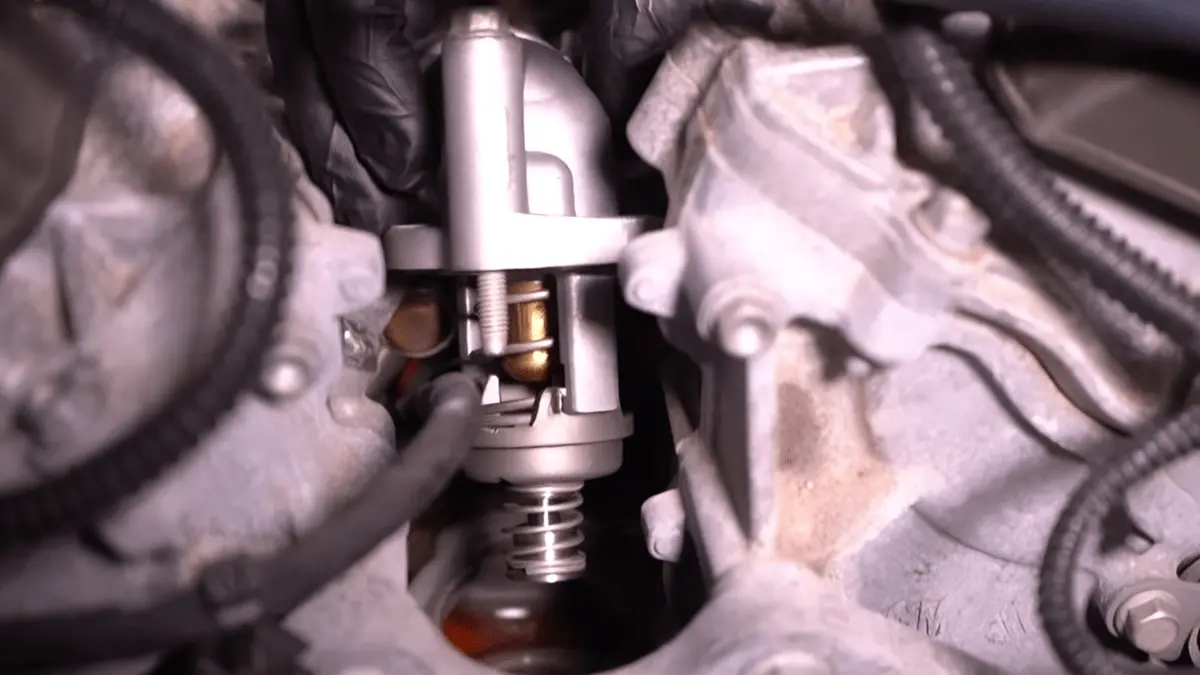Embarking on the journey of the 2017 GMC Acadia thermostat replacement is a crucial step to ensure optimal engine performance and prevent potential overheating issues. In this comprehensive guide, we’ll navigate the intricacies of replacing the thermostat in your GMC Acadia.
Whether you’re a seasoned DIY enthusiast or a first-time car owner, dive into this guide to master the art of thermostat replacement and keep your GMC Acadia running at its best.
What Is The 2017 GMC Acadia Thermostat?
The thermostat in a 2017 GMC Acadia is a crucial component of the vehicle’s cooling system. It regulates the engine temperature by controlling the flow of coolant. The thermostat remains closed when the engine is cold, allowing it to warm up quickly. The thermostat opens as the engine reaches the optimal operating temperature, enabling coolant circulation to maintain a consistent temperature. This process ensures efficient engine performance and prevents overheating. If the thermostat malfunctions, it can lead to engine issues, including overheating. Regular maintenance and prompt replacement when necessary are essential for the proper functioning of the GMC Acadia’s thermostat.
2017 GMC Acadia Thermostat Replacement Cost
The cost to replace the thermostat in a 2017 GMC Acadia typically ranges between $688 and $739. This estimate covers both parts and labor. On average, the thermostat costs around $493, while the labor expenses are anticipated to be $195 to $246. It’s important to note that these figures are averages, and the actual cost may vary based on factors such as your specific location, taxes, and any additional fees.
Additionally, depending on the condition of your vehicle, other repairs may be necessary, impacting the overall cost of the thermostat replacement in your GMC Acadia. Always consult a qualified mechanic to assess your vehicle’s needs accurately.
How to Replace the Thermostat in a 2017 GMC Acadia: A Step-by-Step Guide

If you’re looking to replace the thermostat in your 2017 GMC Acadia, follow these step-by-step instructions for a successful installation:
Ensure Compatibility:
Before starting the replacement process:
- Ensure that your chosen thermostat is compatible with your GMC Acadia.
- Check if your home’s electrical system supports the new thermostat, especially if it requires consistent electricity.
- Perform a pre-installation check, especially with the HVAC system starting up for the season.
Turn Off the Power Source:
As a safety precaution, turn off the power source before working on your home’s electrical system. Safety is paramount; this step reduces the risk of electrical accidents or fires. Approximately 500 people lose their lives each year due to electrical mishaps, underscoring the importance of prioritizing safety.
Remove the Old Unit and Check the Wiring:
After turning off the power, remove the old thermostat unit and inspect the wiring. If anything seems amiss, consider seeking professional advice. Typically, the wiring is straightforward and color-coded. Label the wires with tape and a pen before disconnecting them from the old unit, ensuring they don’t tangle against the wall.
Replace Required Parts:
Set up your new thermostat, adding necessary components like new wires or a different faceplate to the electrical system. Follow the manufacturer’s instructions meticulously for a correct and safe installation. This step ensures your new thermostat operates optimally and adheres to safety standards.
Install the New Thermostat:
Connect the color-coded or identified wires with your new thermostat according to the instructions. Ensure secure connections to prevent issues in the future. Before placing the thermostat into its faceplate, confirm that all connections are accurate. Depending on the previous thermostat installation, you may need to do some painting or repairs.
Turn On the Power and Test:
Once everything is in place, turn the power back on and test the new thermostat. Your HVAC system should start operating immediately if you’ve followed all the necessary steps. If issues persist, consider seeking professional assistance to identify and rectify any common mistakes or consult the manual provided with your new thermostat.
By following these steps carefully, you can successfully replace the thermostat in your 2017 GMC Acadia, ensuring optimal functionality and seamless integration into your vehicle’s cooling system.
FAQs
1. How Often Does the Thermostat in a 2017 GMC Acadia Need Replacement?
The thermostat in a 2017 GMC Acadia typically doesn’t have a fixed replacement schedule. It is generally replaced when issues arise, such as overheating or inefficient engine performance. Regular maintenance checks can help identify potential thermostat problems.
2. What Signs Indicate a Faulty Thermostat in a GMC Acadia?
Signs of a faulty thermostat include:
– Engine overheating.
– Fluctuating temperature gauge readings.
– Poor fuel efficiency.
– A heater that doesn’t produce enough heat.
If you notice any of these symptoms, it’s advisable to have the thermostat inspected and replaced if necessary.
3. Can I Replace the Thermostat in My GMC Acadia Without Professional Help?
While replacing a thermostat can be a DIY task for some, it depends on your comfort level with car maintenance. If unsure, seeking professional assistance is recommended to ensure correct installation and prevent potential issues.
4. Are There Different Types of Thermostats for a 2017 GMC Acadia?
Yes, thermostats can vary based on the engine type and model. Choosing the correct thermostat for your GMC Acadia is crucial to ensure compatibility and proper functioning. Refer to your vehicle’s manual or consult a professional for guidance.
5. Can a Faulty Thermostat Impact Fuel Efficiency in a GMC Acadia?
Yes, a faulty thermostat can impact fuel efficiency. If the thermostat is stuck open, the engine may not reach the optimal operating temperature, leading to decreased fuel efficiency. Addressing thermostat issues promptly can help maintain optimal engine performance and fuel economy.
Finally, Can I drive with a thermostat problem?
Driving with a thermostat problem is not recommended. The thermostat plays a crucial role in regulating your engine’s temperature, and a malfunction can lead to overheating or inefficient engine performance. If the thermostat is stuck closed, it can cause the engine to overheat, potentially leading to severe damage.
Conversely, if stuck open, the engine may not reach the optimal temperature, resulting in reduced fuel efficiency and increased emissions. It’s advisable to address thermostat issues promptly to avoid potential engine damage. If you suspect a thermostat problem, consult with a qualified mechanic to assess and rectify the issue before continuing to drive your vehicle.

Eric L. Friedman is a car expert who has worked on Chevy and GMC trucks for over 10 years. He started AutoYolo to help people fix their own cars. On the blog, he shares easy tips, step-by-step guides, and repair advice to make car problems less stressful and more affordable.

